Configure Now
Items in Your Cart0
0Items in Your Cart
Start building your packageShop Now
DRAFINSUB, a leading Italian underwater and maritime contractor, founded in Genoa in 1978 by Adriano "Dino" Passeri. Born from a passion for the sea and diving, the company is a specialized underwater and maritime contractor, providing a range of services including underwater inspections, salvage operations, and infrastructure maintenance.
Recently, as part of the Genoa breakwater reconstruction - one of Italy’s most significant port expansion projects - DRAFINSUB has been using a Deep Trekker ROV to support its team of divers.
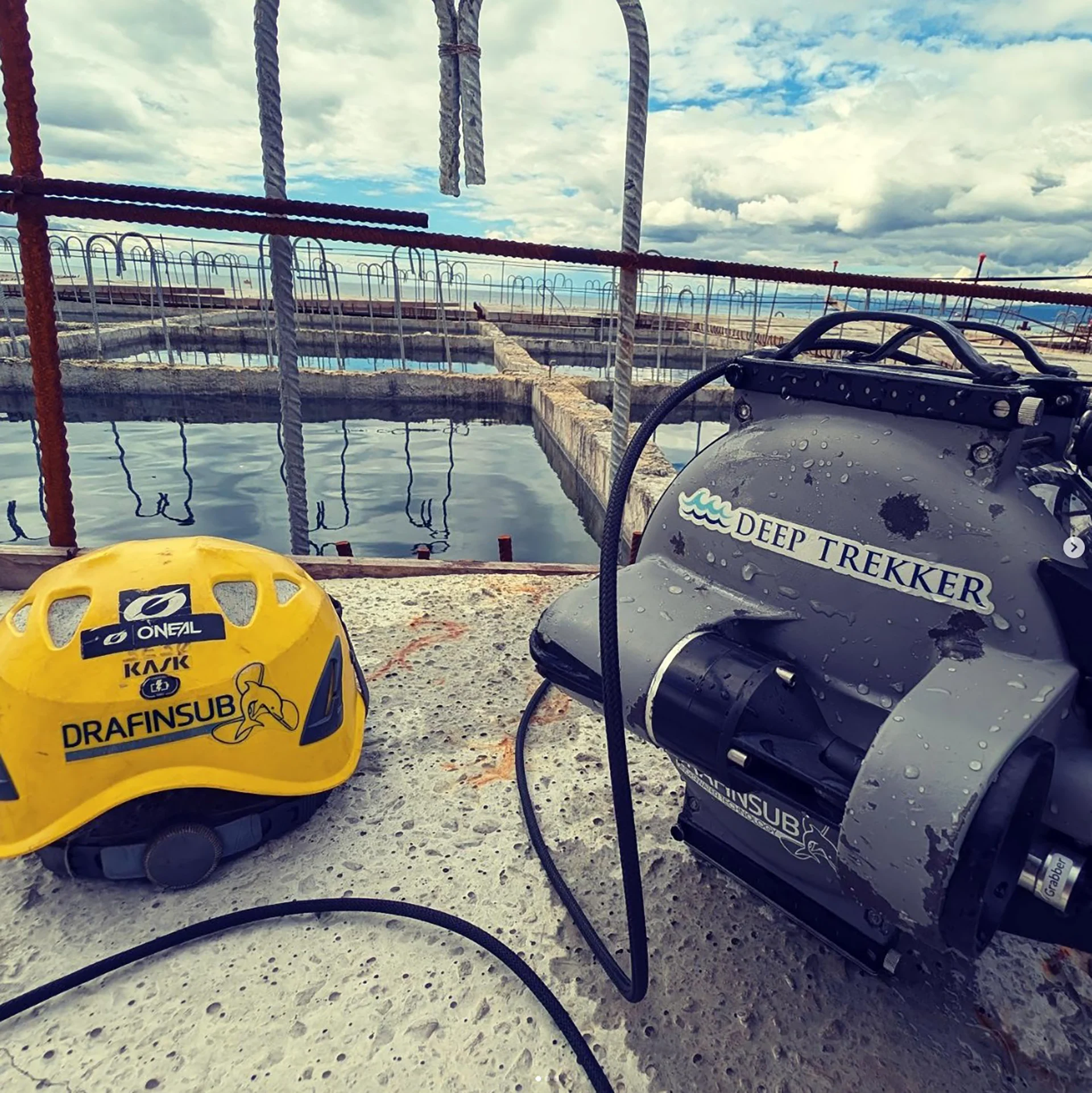
The project involves the placement of massive concrete caissons that form the new breakwater. These structures must be precisely positioned, inspected, and monitored to ensure stability and compliance with engineering and environmental standards. The ROV provides critical visual data during initial placement.
“Our job is to inspect these caissons when they are immersed for the first time. Our team of divers is active 8 hours a day, six days a week, for this activity. It is quite a commitment!” remarks Andrea Dellacasa, ROV operations manager of DRAFINSUB.
DRAFINSUB’s team of divers rely on the ROV to assess positioning accuracy, detect potential misalignments, and verify environmental compliance. By leveraging the ROV’s real-time video feed and maneuverability, operators can inspect submerged structures efficiently without requiring divers to enter the water unnecessarily.
Dellacasa explains, “Our divers prepare their activity with this robot. They check where the caisson has landed, that the laying operation is taking place as planned, etc. We also pay a lot of attention to environmental aspects. The ROV is an electric, silent robot. It does not disturb the fauna and flora in the slightest. It does not need special oils to be added to the thrusters, which are magnetically coupled, therefore very reliable and maintenance-free. In short, all this allows us to comply with the stringent provisions of our client in this sector too.”
Equipped with a magnetically coupled thruster system, the Deep Trekker ROV provides reliable inspections while minimizing disruption to marine life. Unlike hydraulic systems that require external oils or extensive maintenance, the ROVs electric propulsion system offers operational longevity and reduced maintenance costs.
DRAFINSUB has extensive experience with ROVs, already operating a Saab Seaeye Falcon, a high-powered system suited for complex offshore missions. However, the company recognized the need for a more compact, rapidly deployable ROV to complement its existing fleet.
The Deep Trekker ROV was selected for its:
“It was perfect for quick inspections, confined spaces, and nearshore operations where mobilizing a larger ROV wasn’t practical,” noted Dellacasa.
By integrating the DTG3, DRAFINSUB improved its operational flexibility, using the Falcon for more intensive offshore projects while leveraging the DTG3 for nearshore and confined-space inspections.
Learn how Deep Trekker's ROV successfully completed riser inspections under challenging offshore conditions, enhancing safety, efficiency, and reliability.
When asked what challenges DRAFINSUB aimed to solve with the ROV, Dellacasa explained:
“We invested in the Deep Trekker to address several key operational challenges in our underwater and maritime work. One of the biggest concerns was reducing diver risk and operational costs. Deploying divers for inspections and maintenance could be dangerous, especially in strong currents, low visibility, or confined spaces. The DTG3 allowed us to conduct preliminary assessments remotely, minimizing diver exposure and unnecessary dive operations.
Efficiency was another major factor. Many of our projects required frequent underwater inspections, and using traditional methods wasn’t always practical. The Deep Trekker provided a quick, easy-to-deploy alternative, making it possible to conduct inspections on short notice with minimal crew. Its compact size and maneuverability also helped us reach difficult areas, such as inside ballast tanks, beneath docks, or around submerged pipelines - locations that were often unsafe or impractical for divers to access.
Another challenge was obtaining clear visual data for inspections and documentation. The DTG3’s HD camera helped us capture high-quality images and video, improving our ability to assess underwater conditions and provide accurate reports to clients.
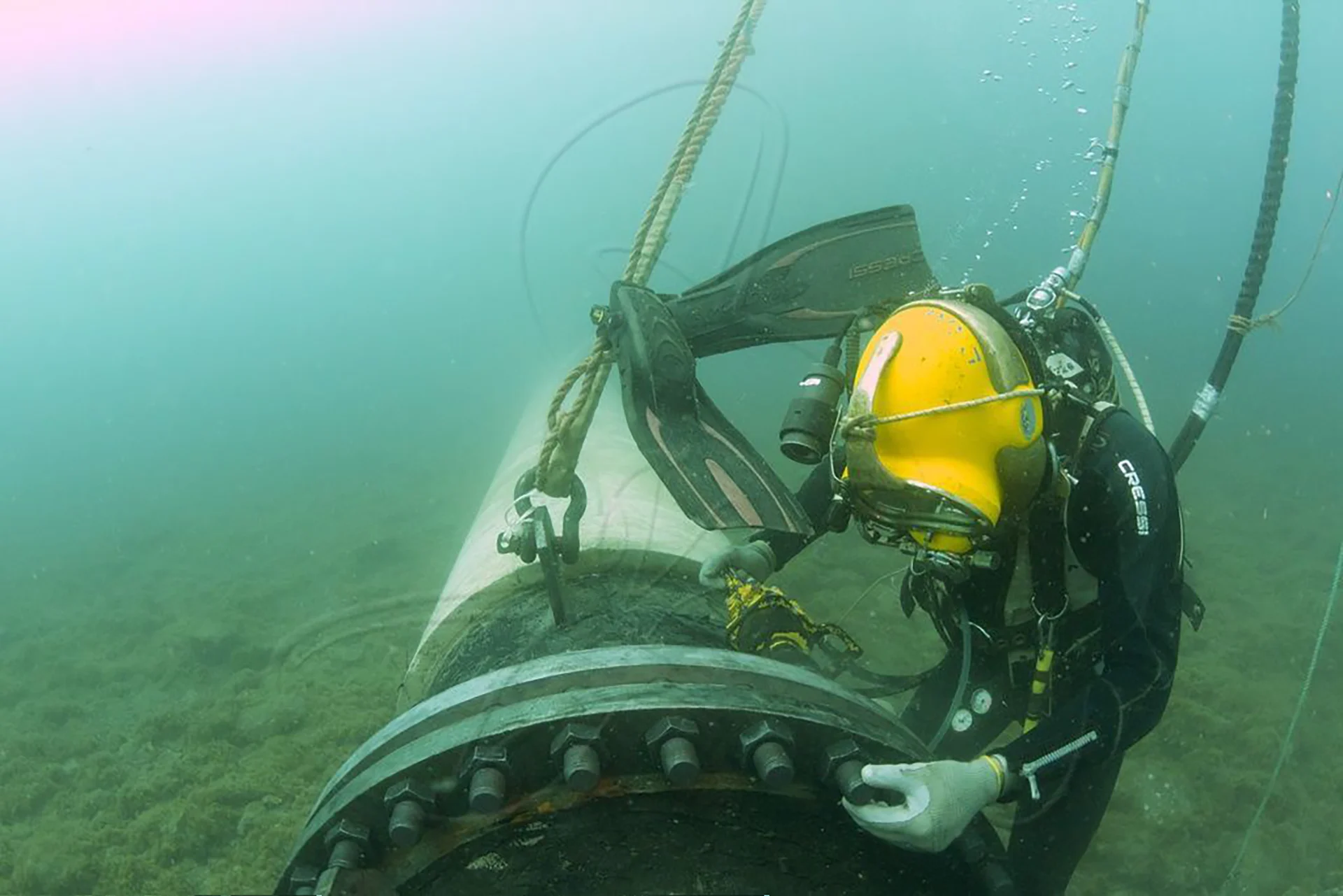
Additionally, because it was battery-powered and tethered, we could deploy it quickly in busy ports, shipyards, or industrial sites without disrupting ongoing operations.
By adding this ROV to our fleet, we improved efficiency, enhanced safety, and reduced operational costs, making it an invaluable asset in our day-to-day operations.”
The DTG3 plays a vital role in DRAFINSUB’s workflow, particularly in pre-dive assessments for divers.
The ROV’s deployment is uniquely advantageous for:
Using the DTG3 for these tasks minimizes the time divers spend underwater, improving both safety and efficiency.
Everything you need to know about and the basics of piloting an inspection class Remotely Operated Vehicle.
DRAFINSUB provides a range of services including underwater offshore inspections, salvage operations, and infrastructure maintenance.
The ROV has become an invaluable tool for a variety of routine underwater activities, allowing the company to operate more efficiently and safely. Some of the key tasks DRAFINSUB has used the Deep Trekker ROV for include:
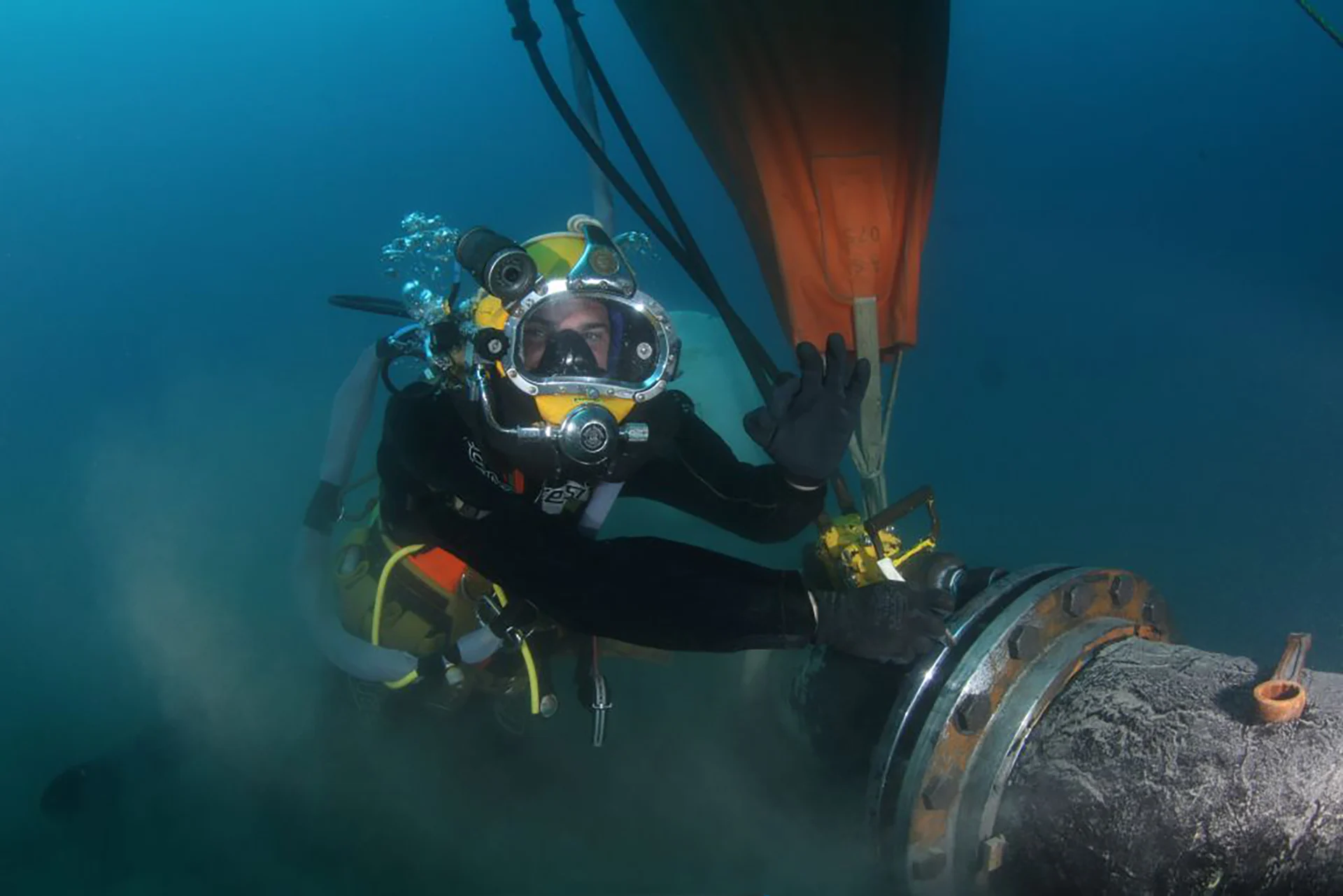
While underwater ROVs significantly enhance offshore inspection capabilities, they do not replace human divers. According to Dellacasa, the ROV serves as an extension of the dive team, allowing them to delegate routine tasks and focus on complex interventions. The ROV reduces diver exposure to hazardous conditions, increasing operational safety while improving efficiency.
"There are operations that current underwater robotic technology does not yet allow us to perform. For example, all the manipulations. But the help that an ROV provides to our team is essential. It is like having two more men. We can delegate to it a whole series of routine activities, saving our most expert divers from expensive, and sometimes dangerous time in the water," remarks Dellacasa.
Tasks such as object manipulation and intricate repair work still require human divers, but the ROV effectively acts as an additional set of eyes underwater. By handling initial assessments and routine monitoring, the ROV helps allocate diver resources more effectively, improving productivity while mitigating risk.

One of the ROVs standout features is its battery-powered endurance. The DTG3 can operate for up to seven hours on a single charge, supporting a standard work shift. This extended operational time allows DRAFINSUB to conduct inspections without frequent battery swaps, ensuring uninterrupted workflow.
“We are very satisfied. The particular and unique configuration of the thrusters allows the ROV to be the most efficient in its category. If well trimmed, in the sense of adding or removing weights to achieve a certain balance between weight and thrust, the DTG3 guarantees up to 7 hours of work. Which is practically the entire working day, and that's what we're looking for,” reported Dellacasa.
DRAFINSUB has found the DTG3 to be a highly efficient tool in their operations, providing distinct advantages for nearshore and routine inspections, with key performance advantages particularly due to:
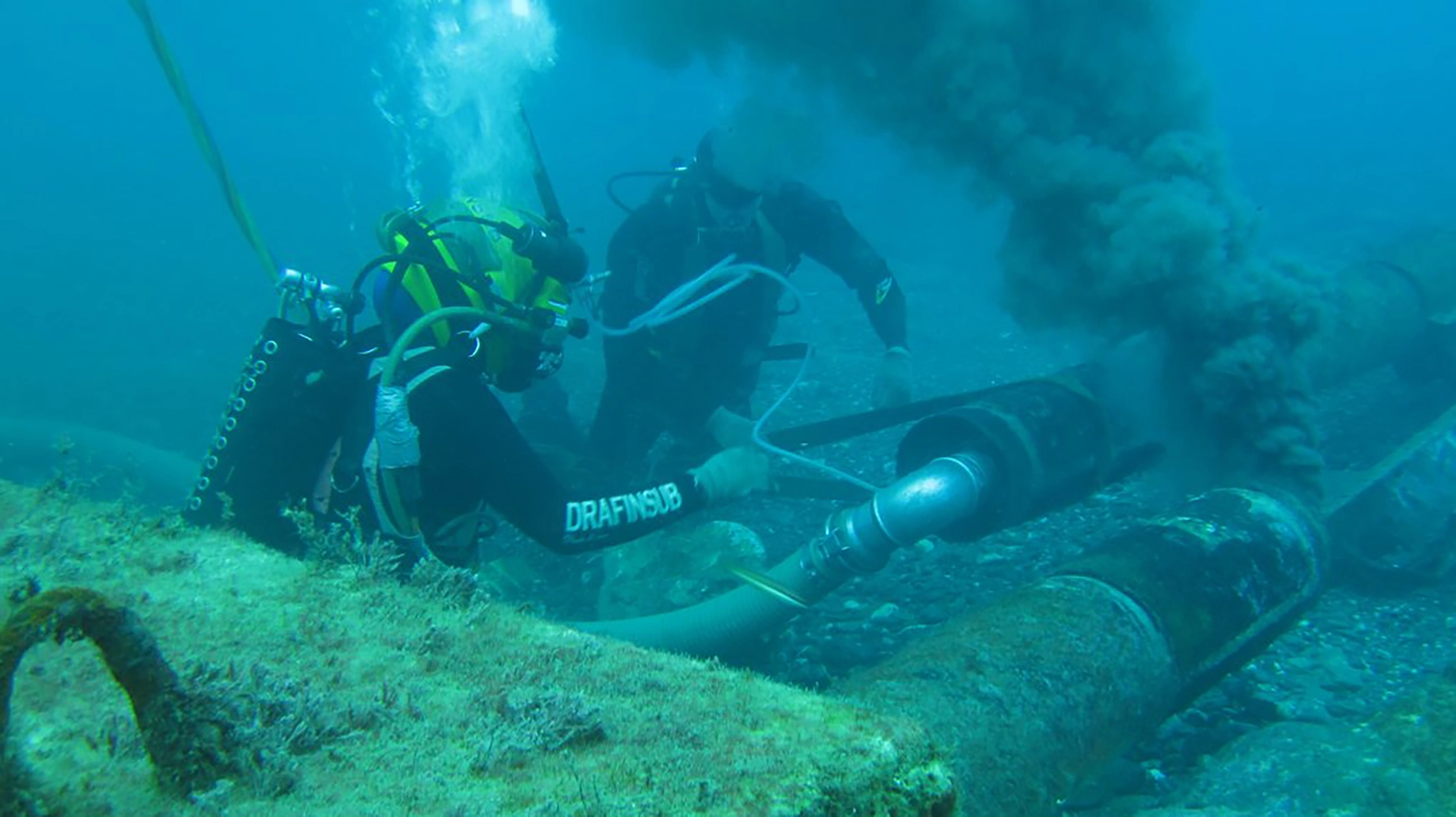
Dellacasa remarked that another standout feature was its durability and ease of use, stating that it performed exceptionally in strong currents and low-visibility environments, providing clear visuals and maintaining stability where other compact ROVs might struggle. Designed for rugged underwater environments, the DTG3 requires minimal maintenance and can operate in harsh conditions, including strong currents and low visibility. The intuitive controls allow their team to operate it efficiently without extensive training, making it a practical choice for both routine and urgent tasks.
“Working with the Deep Trekker ROV has been a game-changer for our operations, and what made us happiest was the sheer convenience and efficiency it brought to our workflow. The ability to deploy it quickly with minimal setup meant we could conduct inspections on short notice, something that was previously a challenge with traditional methods.”
DRAFINSUB operates both the Deep Trekker DTG3 and the Saab Seaeye Falcon to address different operational needs. The DTG3 offers high portability due to its battery-powered design and small form factor, enabling rapid deployment and operation. It is particularly suited for routine inspections and confined-space work. In contrast, the Falcon requires a larger crew and setup time, with operational endurance dependent on its tethered power source. It is better suited for offshore operations and heavy-duty tasks.
Comparison of ROV Capabilities:
Portability
Deployment Time
Suitability
By incorporating both ROVs into their fleet, DRAFINSUB ensures the right tool is available for any underwater operation, optimizing cost-efficiency and safety.
ROVs quickly detect corrosion, misalignment, and damage in subsea cables and pipelines—without costly downtime or diver risk.
From an economic perspective, the ROV provides strong value through operational efficiency. The ability to reduce diver intervention lowers operational costs while simultaneously enhancing safety. Fewer diver hours in hazardous conditions translate to a lower risk of decompression sickness and other occupational hazards.
For DRAFINSUB, the Deep Trekker ROV has proven to be a valuable investment. By extending the lifespan of existing infrastructure through regular ROV-assisted inspections, the company minimizes costly emergency repairs and extends the usability of underwater assets.
"The price of the machine is reasonable for the type of work it does. It has a good quality/price ratio. And as I mentioned, it allows you to save a lot of diving time and make operations safer - so it offers both economic and safety benefits. And someone from Genoa tells you this! As you know, we are the city in Italy most famous for being ‘careful’ in financial investments,” jokes Dellacasa.
Like any underwater equipment, ROVs are exposed to harsh conditions that can cause wear over time. One of the DTG3 units used by DRAFINSUB experienced pronounced oxidation on aluminum components due to galvanic currents. Deep Trekker’s support team quickly provided a warranty replacement, ensuring minimal disruption to ongoing operations and demonstrating strong customer support.
"Deep Trekker support service quickly and completely replaced the machine under warranty and since then we have not had any more problems," said Dellacasa.
This incident highlights the importance of robust customer support and continuous product improvements. Deep Trekker actively refines its systems based on real-world feedback, addressing potential vulnerabilities to improve long-term reliability.
Dellacasa explains that using the DTG3 has led to some interesting discoveries and valuable insights in their underwater operations. One of the most notable findings came during a routine dock and pier inspection, where the ROV helped identify unexpected structural wear that wasn’t visible from the surface. What was initially thought to be minor marine growth turned out to be significant corrosion on several submerged pilings, prompting early intervention and preventing costly repairs down the line.
Another memorable experience was during a hull inspection of a vessel scheduled for maintenance. The DTG3 allowed the team to locate fouling and minor damage to the propeller blades, which could have impacted fuel efficiency and performance. Because the ROV detected it early, they were able to schedule targeted cleaning and maintenance without unnecessary dry-docking.
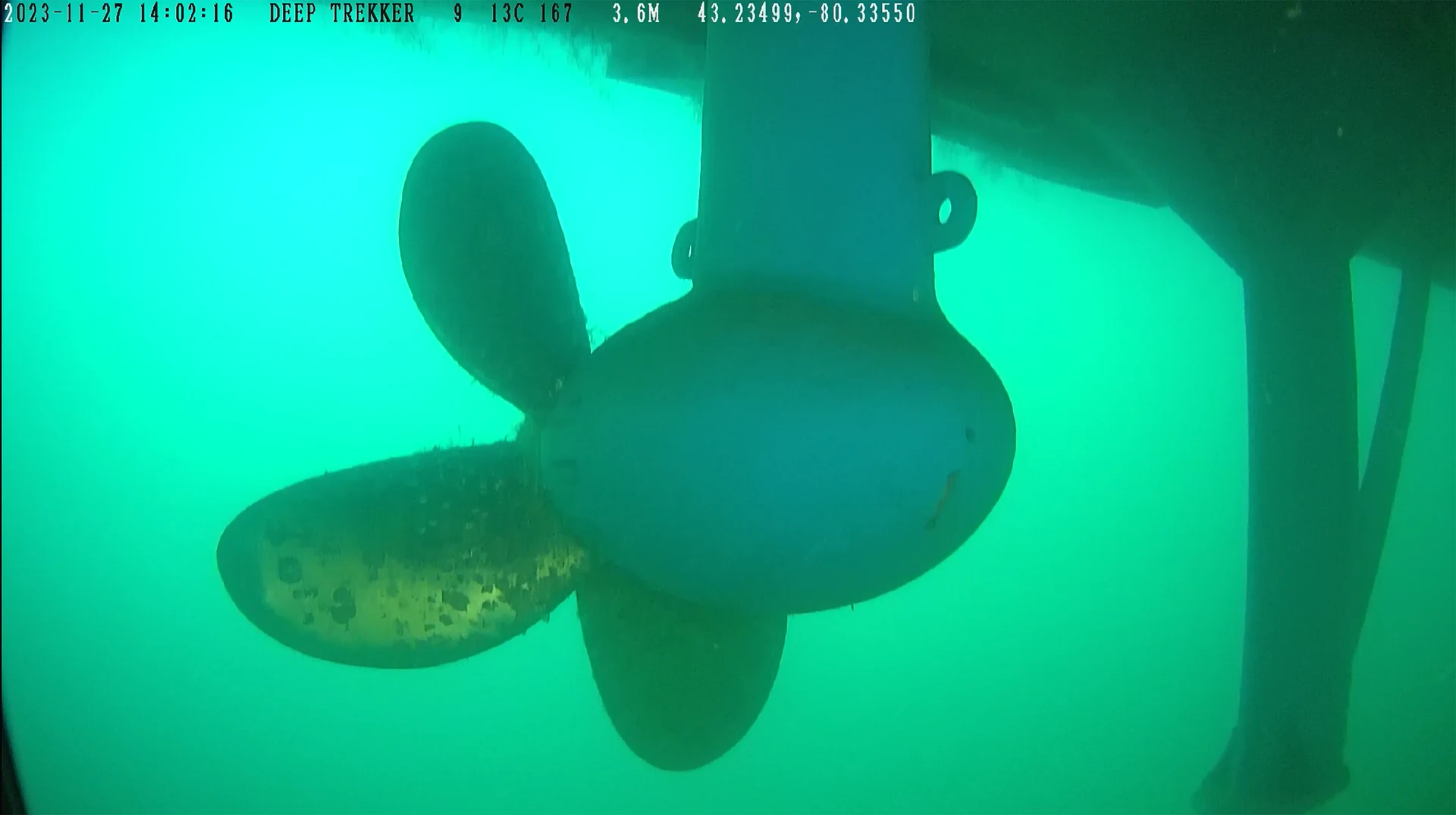
DRAFINSUB has also used the ROV in low-visibility conditions, where it provided better clarity than expected. During an inspection of a submerged pipeline, they were able to pinpoint an area of debris accumulation that could have caused flow disruptions. This was particularly valuable because divers would have faced significant challenges identifying the issue in those conditions.
Beyond inspections, the ROV has been useful in search and recovery operations, helping locate and assess lost equipment on the seabed with minimal disruption. In one case, they retrieved a critical tool that had fallen overboard, saving time and resources that would have otherwise been spent on manual recovery efforts.
One of the most surprising benefits of the Deep Trekker ROV, according to Dellacasa, has been its ability to quickly assess emergency situations, allowing the team to make informed decisions without immediately deploying divers or heavy equipment. In one instance, after a vessel reported an anchor entanglement, they were able to use the ROV to locate and assess the obstruction within minutes, determining the best course of action for freeing it safely. This saved both time and unnecessary risk to divers, who would have otherwise been sent in without a clear understanding of the situation.
Another unexpected use was how well the ROV performed in confined or hard-to-access areas, such as inside ballast tanks and beneath submerged structures. While they initially planned to use it for more open-water inspections, it quickly became a go-to tool for investigating spaces that were either too small or too risky for divers.

The team was also surprised by how useful the ROV’s video documentation became for client reporting and regulatory compliance. Having clear, real-time footage allowed them to provide visual proof of underwater conditions, streamlining decision-making and improving transparency in our operations.
“Overall, while we expected the DTG3 to be a valuable inspection tool, it has exceeded our expectations by providing faster emergency response capabilities, safer access to challenging locations, and improved documentation for asset management,” stated Dellacasa.
DRAFINSUB’s experience with the Deep Trekker DTG3 underscores the benefits of integrating ROVs into offshore underwater operations. The ROV enhances efficiency, improves safety, and provides a cost-effective solution for routine inspections. By complementing diver-based operations with robotic technology, DRAFINSUB ensures the highest standards of accuracy and environmental responsibility in complex maritime infrastructure projects.
“The DTG3’s combination of mobility, high-quality imaging, and user-friendly design made it an essential tool, improving our ability to conduct inspections, monitor underwater assets, and respond to challenges quickly and effectively,” concluded Dellacasa.

As offshore industries continue to evolve, the role of ROVs like the DTG3 will only expand, offering new opportunities for innovation in underwater engineering and inspection processes.
Our team consists of highly skilled professionals with extensive industry experience, dedicated to assisting you in integrating submersible robots into your operations seamlessly. Whether your project involves pipeline and infrastructure inspections, water tank maintenance, salvage operations, underwater surveys, search and recovery missions, aquaculture operations, environmental monitoring, marine research, or other specialized applications, we are equipped to cater to your unique requirements and objectives effectively using our state-of-the-art underwater ROV solutions.

When you're ready to secure your very own Deep Trekker vehicle, feel free to contact us, and we'll be happy to provide you with a customized quote tailored precisely to your requirements. Incorporating Deep Trekker ROVs into your underwater operations ensures unmatched safety, efficiency, and success.
Talk to us about how we can help you perform inspections of submerged assets with ROVs
November 3rd, 2025
At REPMUS 2025, Deep Trekker’s ROVs validated real-world mine countermeasure capabilities...
July 5th, 2025
Deep Trekker’s new Tampa facility brings faster ROV repairs, in-stock parts,...
June 11th, 2025
Equipped with sonar and DVL, Deep Trekker ROVs are helping SES...